(As told to Steve Reynolds by David Muirhead)
Society member David Muirhead has provided several fish images for the Australian Museum’s Find A Fish website. It seems that the site contains information on at least 1412 species in 270 families.
The feature photo for David’s profile was taken on the surface after a dive at Port Hughes Jetty in March 2002. It was taken by past member Chris Hall.
At the time of writing, his latest image to be posted to the site is that of a male Bluefin Leatherjacket at the Noarlunga Tyre Reef.
Another recent posting to the site features a cropped image of this photo taken by David, featuring Surf Sardines, Iso rhothophilus: –
This photo was taken at Myponga by David on 3rd January 2015. A further cropped image of the same photo can be found on the site. David says that the depth of the surf sardines themselves was between 0.5m and 1.5m metres. “They were in a narrow rock reef channel which has multiple, mainly small, surgy connections with the adjacent ‘longshore’ open water (with depth about 5m). Even at low tide, it varies from 4m to 1m,” he says.
A rocky channel at Myponga, the habitat of Surf Sardines
(Taken by David Muirhead)
(Source: http://australianmuseum.net.au/image/rocks-at-myponga )
According to David, “This species, Iso rhothophilus, of the Surf Sardine family, Family Isonidae, is the only Australian representative of the Genus Iso and ,within Australia, it is only known from parts of southern Australia (see map page 401 of ‘Fishes of Australia’s Southern Coast’ by Gomon, Bray & Kuiter, 2008) but is also known from Taiwan and Japan.
“The book gives Iso rhothophilus the common name Surf Fish, but ‘Other Common Names’ given by same book are “Flower-of-the-waves” and “Surf Sardine”.”
“Last I’d heard, still no ALA (Atlas of Living Australia) records of Iso rhothophilus in SA, but I’ve seen it before with Kevin Smith at Rapid Head also, and it must be quite common here in SA in suitable surge sites, and is well known from WA and Victoria, etc.. While little is known of its biology, it sort of qualifies as a ‘reef’ fish of interest, as it is apparently only known from moderate/high wave energy rocky coasts
i.e. it seems not to venture out into open water (unless as plankton, etc..) so SA’s low population of divers, etc.. is the likely reason for, till now, absence of local records of the species. The thing of most interest to me is that no distribution maps yet show it as being recorded from SA, period (SW of WA and Eastern Vic and all of NSW yes, but not Tasmania),” says David.
David also took this photo of a school of Silver Fish, Lepatherina presybyteroides, at Haycock Point, Carrickalinga on 2nd January 2015: –
Silver Fish feature on page 67 of “Coastal Fishes of South-eastern Australia” by Rudie H Kuiter (as Leptatherina presybyteroides). They are also mentioned on page 54 of “Guide to Sea Fishes of Australia” by Kuiter (as Lepatherina presybyteroides), being compared to the Small-mouth Hardyhead, Atherinosoma microstoma. There is a Silver Fish photo on page 101 of “World Atlas of Marine Fishes” by Kuiter & Debelius (as Leptantherina presybyteroides).
I turned to Google for some clarification of the correct scientific name to use for Silverfish. This was unsuccessful, so I turned to “Sea Fishes of Southern Australia” by Barry Hutchins & Roger Swainston. This book used the scientific name of Atherinosoma presbyteroides for Silverfish, which are featured on page 36 (Fish No.131).
According to FishBase , “Atherinosoma presbyteroides (is a) Synonym for Leptatherina presbyteroides”. Further clarification explained that “Leptatherina presbyteroides (is the) Accepted name”. It appears then that only “Coastal Fishes of South-eastern Australia” by Rudie H Kuiter uses the correct scientific name for Silver Fish.
I then found that Leptatherina presbyteroides is listed on the ALA website . I’ve now added David’s sighting (& image) from January 2015 to the ALA website data. (I was also able to add a new (old) sighting of the swimming anemone, Phlyctenactis tuberculosa, to the data on the ALA website.)
David says, “There is huge room for confusion between the currently used common names across the two southern Australian families within the Order Atheriniformes (=Silversides cf page 395); Family Atherinidae (Hardyheads, Old World Silversides) and Family Isonidae (Surf Sardines) called Surf Fish on page 401 of ‘Fishes of Australia’s Southern Coast’ by Gomon, Bray & Kuiter, 2008.
“Family Atherinidae has 7 spp. in 4 genera in southern Australian waters, but there are about 35 spp. in 9 genera in Australia and 26 genera with 165 spp. worldwide.
“To make matters worse for we amateurs, within the genus Leptatherina, Leptatherina presbyteroides is given the common name Silver Fish but ‘Other Common Names’ include Elongate Hardyhead, Port Lincoln Hardyhead, Prettyfish and Tamar Hardyhead(!)
“The Australian Museum’s Find A Fish website, as I recall, now calls it Elongate Hardyhead, so perhaps I should drop the name Silver Fish entirely! Silver Fish/Elongate Hardyheads are well known to occur in all of SA except our far west coast (see map page 400 of ‘Fishes of Australia’s Southern Coast’ by Gomon, Bray & Kuiter, 2008), and Mark’s previously posted other photographers’ images of this species, taken interstate. I sent the above image to the Australian Museum’s Find A Fish website, mainly hoping that they could confirm or refute my tentative ID, but I have yet to get any response with regards to that separate line of enquiry,” says David (….but David knows how frantically busy Mark McGrouther from the Australian Museum’s Find A Fish website is right now, and Mark always gets back to him ASAP, so ‘good on you Mark!’)
David later sent me a number of ‘silver fish’ photos as shown below. These can also be seen at Google+ .

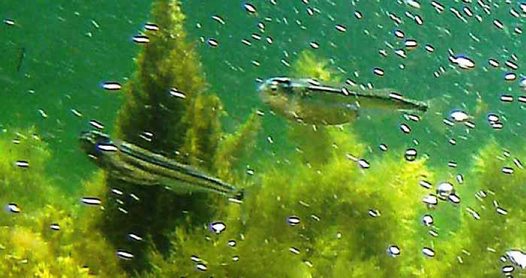
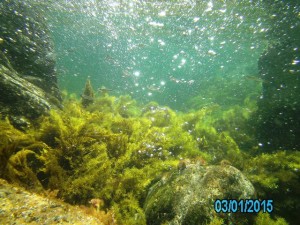
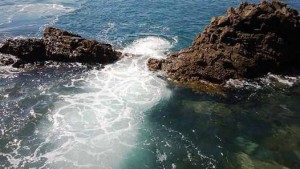
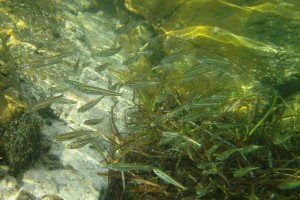
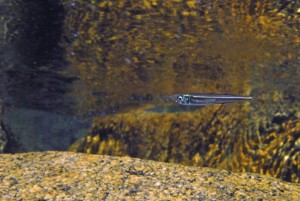
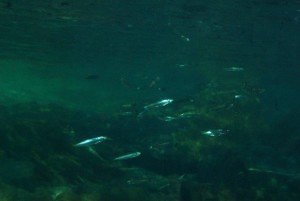
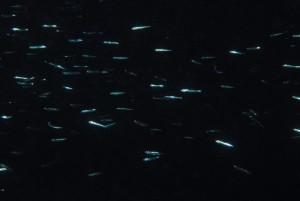
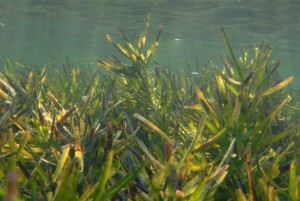
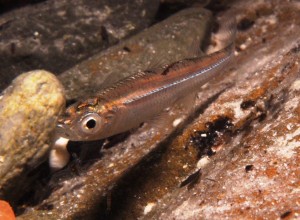
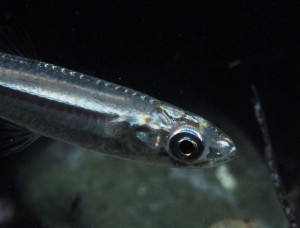
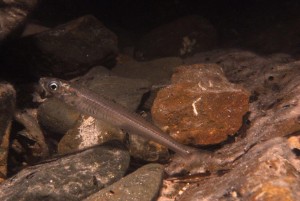
Worth noting, the last 3 images Steve posted are all of the one individual hardy-head @ night in calm clear shallowest subtidal Carrickalinga , (14-11-2011) and in the 5th image (of images 5,6+7) a small P.serenus shrimp is present very near the fish’s head, while in the 7th (last) image no shrimp are apparent BUT the fish is angled in what is almost certainly a cleaner client pose.
Ergo add ‘silver fish’, elongate hardy-head, or whatever you prefer as common name, to the rapidly growing list of inshore fish species (either known as,or almost certainly known as) being at least occasional clients of this exceedingly common facultative cleaner shrimp species in SA: Palaeomon serenus (variously known as Rock-pool Shrimp and Red-handed or ?Red-banded Shrimp)